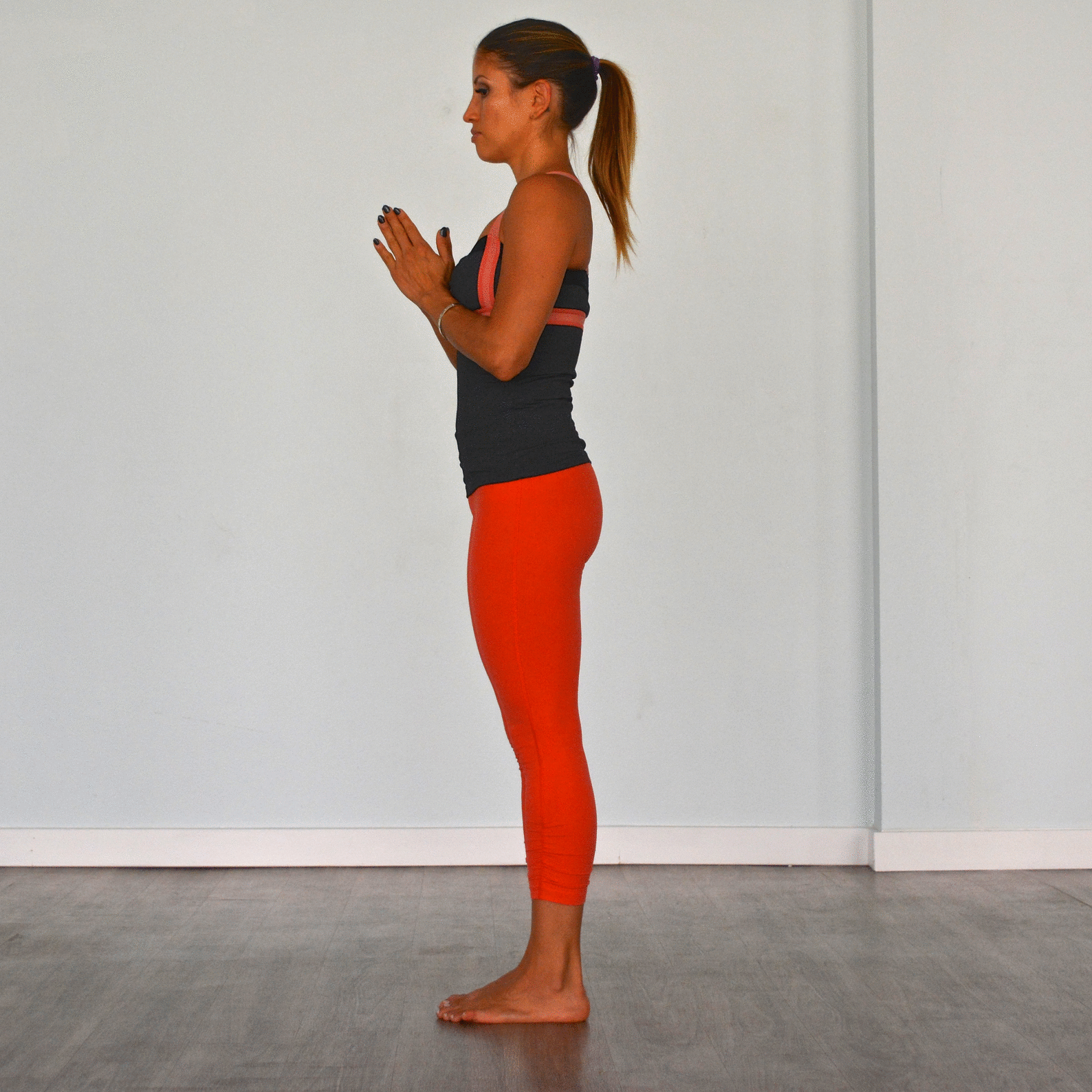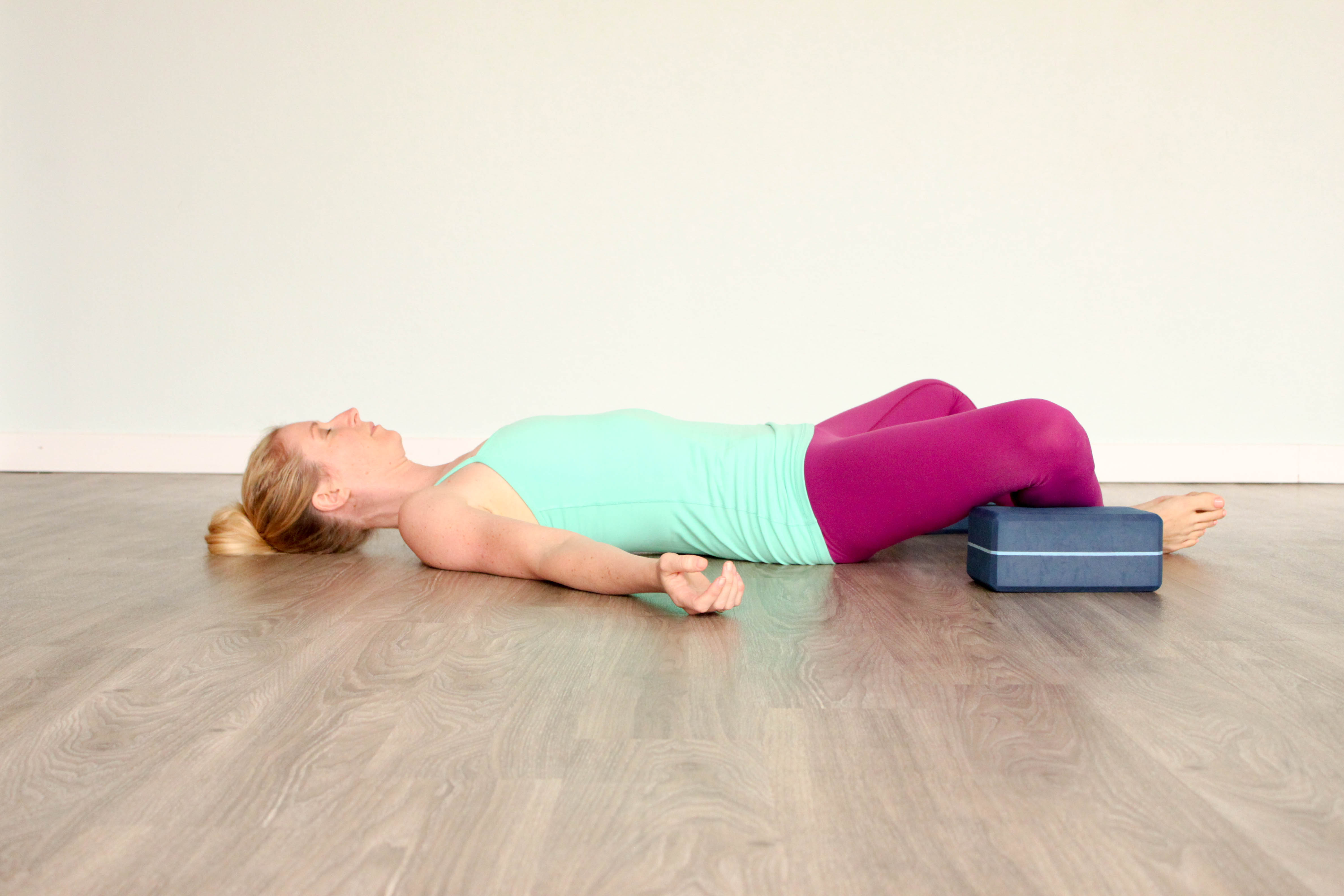The word “vinyasa” is derived from the Sanskrit term nyasa, which means “to place,” and the prefix vi, meaning “in a special way.” Most students understand vinyasa yoga as a set of flowing postures connected by the breath. As new teachers it’s often difficult to create classes that are intelligently sequenced due to the loose nature of the vinyasa style. However, when flows build off each other in a logical progression it creates classes that feel good in every type of body. In our teacher trainings we spend a lot of time going over the anatomy of vinyasa yoga classes and what we can do to create seamless flows that leave students feeling invigorated and balanced.
The general progression of a vinyasa yoga class
- Centering & Grounding to Create Presence
- Initial Opening Poses to Ease Into Movement
- Warm-Up to Build Internal Heat
- Peak Postures Make Up the Meat of the Class or Highest Point(s) of Intensity
- Cool Down to Wind Down the Energy
- Savasana for Final Relaxation
- Closing to Incorporate a Final Philosophy or Idea
Centering and Grounding
The beginning of class is very important since it set the tone and foundation for the rest of the class. Choose a pose where students can settle in and be comfortable. There are many poses suitable for starting a class, such as mountain pose, child’s pose, seated cross-legged, reclined on the back, standing in a forward fold with knees bent, flat on the belly with head to one side, or in fetal position. Depending on the level of the class some of these poses fit better than others.
Using the physical pose cues, guide students into present awareness by feeling their bodies in the pose and cue them to begin noticing their breathing. Encourage them to let go of the external and past stuff so they can begin to “arrive” both physically and mentally into the present moment. Take a few moments to go over a few of the following topics:
- Ujjayi Breathing – What is is, how it’s done and why it’s important
- Pratyahara (withdrawing the senses) – What is it, how does one practice it throughout the class and why does it matter?
- Remind students to always stay with the breath and to always be gentle with themselves, taking breaks or modifying wherever needed
- Is there an appropriate and concise opening thought you want to share?
- You can invite students to set an intention for the class or to take a moment to let go of something from their day that doesn’t serve them
Initial Opening Poses
After centering students, rooting them in the present moment, and setting up the breath, we can begin to move with more awareness. The direction you take from your starting pose depends on the level and type of class you’re teaching and what you’re hoping to accomplish. Keep in mind that the first couple of poses should be gentle and easily accessible from that first posture. Think of these initial poses as “feel good asanas” that resemble taking a stroll through the park. This is the point of class where students are trying to apply the breath, drishti and pratyahara while also noticing how their bodies feel. Hence, the first few minutes of class should give them a little more time and space to ease in.

How to Effectively Warm Up Vinyasa Yoga Classes
This is a crucial part of class for many reasons. It doesn’t feel good to do deep stretches without the proper wamp-up, and if our bodies aren’t prepped correctly, we can increases the risk of injury. There are various ways to create internal heat in the body and below are a few suggestions.
- Sun Salutations
- Abdominal Work
- Neutral Arm Balances (side plank, crane, koundiyanasana)
- Kriyas such as Kapalabhati breathing, malasana to forward fold multiple times
- Sequence Repetitions (starting with 5 breaths then repeating several times one breath per movement)
- Inversions (headstand, forearm stand, handstand)
It’s important to remember that the most important parts of the body to warm up are the spine, shoulders and hips (which includes the hamstrings). All the deeper/peak stretches require supple muscles around spine, hips and hamstrings, as well as mobility in the shoulders and chest. Keep this in mind while you plan your warm-up sequences.
The Peak Part of the Class Should Reflect Prep Poses Taught in the Warm-Up
Some teachers like to build their class to lead up to a single peak pose, while others create intensity in the middle of class with their flows and various challenging postures. No matter what route you take think of your warm-up as a prep for those deeper poses that you want to teach later on. Whether it’s triangle variations, splits, binds, or hip openers, they almost all require warming up the parts of the body we mentioned above.
Examples of Preparation for Peak Postures
If you’re teaching flying pigeon make sure you’ve done other variations of pigeon to precede this deep arm balance so the body is ready for it. Think figure four legs in chair pose, single pigeon or reclined pigeon.
If you’re teaching splits, warm up with half splits, prasarita padottanasana, parsvottanasana, triangle, standing splits and so forth.
If you’re teaching revolved bird of paradise remember that this is a challenging standing balance pose with a bind that requires a lot of rib cage, spine and shoulder flexibility. Teaching various twists such as revolved side angle, revolved triangle, revolved half moon, and seated spinal twists are great ways to warm up the spine. You can also add shoulder openers to prep the bind and hamstring stretches for straightening the leg in the final variation of the pose.

How to Cool Down the Body in Vinyasa Yoga Classes
The last ten to fifteen minutes of class are great for cooling down the body with seated forward folds, reclined backbends, deep hip stretches and restorative-type postures. You can also take this time to offer up some time for inversions such as shoulder stand, legs-up-the-wall pose or any other inversions that students want to work on if you didn’t have much time to do it earlier in class. Below are a few sequences that work well towards the end of class.
- Single Pigeon to Seated Spinal Twist to Double Pigeon to Baddha Konasana
- Plough Pose to Shoulder Stand to Ear Pressure Pose to Fish Pose
- Bridge Pose to Reclined Spinal Twist to Reclined Pigeon to Reclined Bound Angle
What to Do in Corpse Pose
Savasana is traditionally done reclined on the back with legs and arms extended out to the sides and eyes closed. However, some people experience back pain in this position. You can offer bolsters or a blanket to support the knees or spine as an alternative. You can also suggest savasana in viparita kerani, also known as legs-up-the-wall pose. Savasana is all about finding a comfortable spot where the body can fully relax and surrender for a few minutes. Your voice during this part of class should be soft and nurturing. Invite your students to take a deep full breath in and then sigh it out with sound. This can feel very cleansing and relaxing. You can say a few words about the importance of conscious relaxation and then just allow the silence or meditation music to permeate the room. The type of music you play in final relaxation is also as important. Music with lyrics in English can be very distracting, so we suggest music superficially made for meditation and relaxation. Silence is also a nice way to end class once in a while. If you feel comfortable and you have experience, try a guided meditation. Typically savasana is at least five minutes long, but preferably 10-15 minutes if you’re teaching a longer class. When you’re ready to call your students back out of corpse pose make sure your voice is soft, almost whisper-like, and gradually increase your volume as you continue to speak. Have the students ease back into movement, giving themselves a little stretch and rolling to one side in fetal position for a few moments before coming up to seated.
Final Closing Thoughts to End Class
The moment before class ends is your last chance to plant some final seeds of wisdom. This is when your students are the most receptive, and they’re usually feeling euphoric. It’s great if you can teach a solid physical class, but can you also offer your students a little yoga philosophy that they can apply to the other aspects of their lives? This is the perfect opportunity for you to share a quote or something that you’ve learned from doing yoga. Try to be concise and direct, but most importantly, speak from the heart. Don’t just repeat something you heard somewhere. In order for your words to make an impact on someone you have to believe it yourself and be authentic. Feel free to do one last breath together before sighing it out. You can also finish class with a few rounds of OM, and always end with the word Namaste which means “the light in me bows and honors to the light in you.”

Leave a Reply
You must be logged in to post a comment.